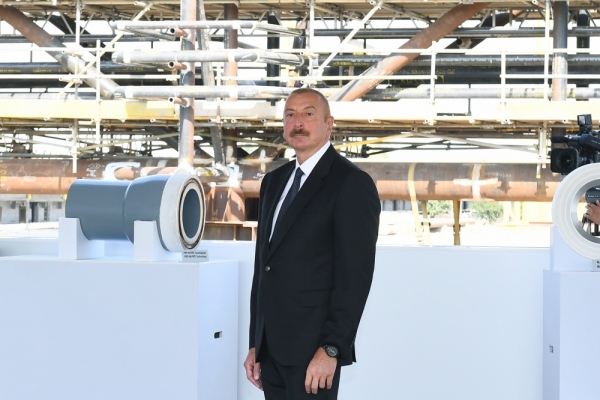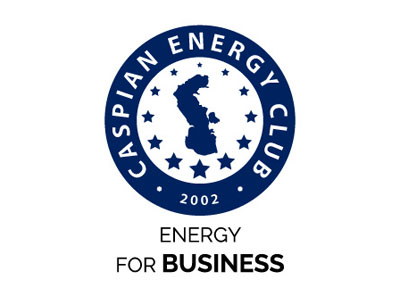The unprecedented rise of natural gas prices in the EU has hit all the European households and governments which had to subsidize the growth of costs in the main production chains. European gas has almost equaled the Asian price range - $1,600 - $2,000 per thousand cubic meters, whereas there is a shortfall announced on carbon dioxide which is a by-product of fertilizer production and is much needed in industry.
It seems like the way out of the global warming has come by itself and new technologies for carbon dioxide capture from the atmosphere have finally became commercially attractive. They will be especially relevant if the forecast of the European Commission President Ursula von der Leyen comes true, who said that gas prices in Europe will begin to decline by spring and added that the EC intends to increase investments in green energy in response to the energy crisis in Europe. She did not specify what kind of energy she meant.
The gas price in Europe exceeded $1,600 per 1 thousand cubic meters during the October 6 trading, setting a new historical record. This is evidenced by the data of trading at ICE. The November futures price at the TTF hub in the Netherlands reached $1,607 per 1,000 cubic meters. The supply of coal on the European market remains limited, as the main suppliers of solid fuel in the region do not have time to increase fuel exports at such a high pace. Coal prices in Europe have increased by 16.5% over the past week – up to $232 per ton. This value was the highest in at least the last 20 years. As the result, over the past 5 years the coal reserves in the ports of north-western Europe are seen at the lowest level for this time of year. At the same time, the EU receives most of its natural gas from Russia. In 2020, Russian gas accounted for 43.4% of natural gas supplies to the EU, followed by Norway with 20%. Together with Algeria, it makes approximately 85% of the market. But Gazprom says that supplies to the EU are at a historical maximum, and the fields in Norway are getting depleted, reducing supplies to the EU market from year to year. If the volume of Norwegian gas supplies to the EU amounted to 134.8 billion cubic meters in 2017, then in 2020 it already totaled about 102 billion. At the same time, production in Norway is falling (by about 6% in 2019), its large deposits are being depleted. Algeria plans to stop the supply of pipeline gas to Morocco, Spain and Portugal on October 30. The relations between the states became even more strained this summer when Algeria accused Morocco of involvement in the occurrence of several serious forest fires on its territory, the article says.
Supplies to Europe via gas pipelines from North Africa are gradually declining. Until 2016, the average volume of gas exports from Algeria to the EU (via the Medgaz, TransMed and MEG pipelines and in the form of LNG) averaged 55-60 billion cubic meters. The export started declining after 2017. In 2019, Algeria reduced exports to 32.5 billion per year. In 2020, the situation stayed almost the same.
The major reasons for this decline aregrowing domestic demand for gas within the country, problems with the management team of Sonatrach public company (4 directors have been replaced in 2 years), territorial disputes with Morocco, the country transiting Algerian gas through the MEG pipeline, due to the sovereignty of Western Sahara. Moreover, a high level of associated gas combustion is a distinctive feature of hydrocarbon production in Algeria, which means that if a carbon tax is introduced in the EU and it applies to hydrocarbon imports, methane from North Africa (because of the carbon footprint) will cost much more than it does now.
Gas supplies from Libya via the Green Stream pipeline do not inspire optimism either. In 2020 pumping along this pipeline decreased to 1.6 billion cubic meters per year (in 2019 it totaled 1.8 billion).
So far, no need has arised to count on supplies from gas storage facilities meant for cold winter period. According to the latest data from the Gas Infrastructure Europe Association (GIE), the storage facilities of the EU and the UK are only 75.71% full in total, although a year ago the corresponding figure was about 95%. The lowest volume of gas reserves is currently fixed in Germany (69.05%), Sweden (66.42%), the Netherlands (58.49%), Austria (54.52%) and Portugal (51.25%).
The launch of the Nord Stream 2 gas pipeline with a capacity of 55 billion cubic meters of gas per year will not help the crisis either. It starts from the “Slavyanskaya” compressor station in Kingisep district of Leningrad oblast and goes toward the Baltic shore of Germany. The laying of the first string of the pipeline ended early in June. The second leg was complete in September. Earlier, Gazprom talked about its intention to start gas supplies via the new pipeline in 2021. Potentially, 5.6 billion cubic meters of gas can be delivered to Europe by the end of the year, as was said by the Russian company.
Five EU countries have decided to investigate the reasons for the record rise in gas prices in Europe. The joint statement was signed by the Ministers of Economy and Finance of France, Spain, the Czech Republic, Romania and Greece.
The document notes that the increase in gas and electricity prices puts a heavy burden on households and businesses. Countries have made a number of proposals. In particular, they believe that a common approach has to be worked out at the European level and common rules on the volume of gas reserves shall be passed in order to immediately respond to price spikes. The statement suggests improving coordination when making purchases, in order to improve common positions.
The authors of the document consider it necessary to reform the EU electricity market in order to improve the relationship between the cost of electricity generation and its final price for consumers.
“The EU energy market is not ready for what we want to achieve,” French Economy Minister Bruno Le Maire explained on the eve of the eurozone finance ministers meeting held on Monday, October 4, in Luxembourg. It is time to (carefully) study the European energy market. It has one major drawback – the dependence of electricity prices on gas prices.”
Le Maire stressed that the energy crisis is “unfair and burdensome” for consumers and businesses. He also said that together with his Spanish counterpart Nadia Calvino, he will ask the European Commission (EC) to better regulate natural gas reserves in the Union and change the rules with the aim to reduce price fluctuations for it. The EU Common Energy Market was created back in the 90s of the last century to facilitate access to electricity providers and create at least some harmony and order in its prices. The national governments are maintaining full control over their energy sectors.
In fact, there are many reasons for the today’s price crisis, but they will all be the result of one aspiration - “We do not want to depend on [gas] supplies from foreign [countries],” CNBC quotes the French Economy Minister Bruno Le Maire. Therefore, we should pay attention to only one figure - by the end of 2020 the share of Russian Gazprom’s supplies in gas consumption in Europe decreased from 36% to 33% in favor of producers of liquefied natural gas (LNG), Kommersant reports. The head of Gazprom Export, Elena Burmistrova said on January 14 that Gazprom’s share in the consumption of Europe and Turkey decreased by 3 percentage points, to 33% in 2020. The Russian monopolist’s supplies to the EU and Turkey in 2020 amounted to about 175 billion cubic meters of gas.
Therefore, apparently, the EU has decided to enter into a long battle with the Asian market for the supply of liquefied gas, which means that the gas market will finally become unified, which will reduce the investment risks of high price fluctuations, and therefore boost investment in new gas fields which remain the main driving raw material component of almost all “green technologies”.
This is good news for Caspian producers, and especially for Azerbaijan, which already has its own infrastructure on the European market and began supplying Azerbaijani gas to Europe via the Southern Gas Corridor on December 31, 2020. After TAP was successfully connected to the Italian gas distribution network, on November 15, 2020, commercial natural gas was delivered from Melendugno (Italy) via SNAM Rete Gas (SRG) and from Nea Mesimvria via DESFA to Greece and Bulgaria.
As Azerbaijan President Ilham Aliyev said, looking at the Southern Gas Corridor project, one can see that it is unique in many ways. Its length is 3,500 kilometers, the project unites 7 countries. If there were no close cooperation between these countries, its implementation would be impossible. The pipeline passes through very complex geographical areas, mountains with a height of 2500 meters, and its more than 100-kilometer section runs along the bottom of the Adriatic Sea. The Southern Gas Corridor meets the highest environmental standards, and this was the main condition for us when planning and implementing this project. We will continue to develop our energy resources. I can mention Babek field with gas reserves of 400 billion cubic meters.
Absheron gas condensate field has reserves of 350 billion cubic meters and I hope that production will begin there next year. Another field is Umid where natural gas reserves amount to at least 200 billion cubic meters.
Of course, today’s favorable price environment and the observed “gas tectonics” of the rapproachment of the European and Asian markets in favor of a more integral, flexible and dynamic continental market will stimulate gas upstream and make it much more attractive in the long term than in the pre-pandemic period.





